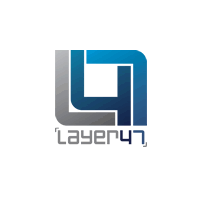Everyone likes to save money, and in these times of financial unrest and stretched budgets, it is no surprise that IT Managers are increasingly looking to derive greater value from implementing cost efficient solutions. With this in mind, we’d like to introduce you to Xsigo, the latest addition to our solution portfolio that dramatically reduces data center server I/O costs.
Enter I/O Virtualisation – The Final Piece in the Virtualised Infrastructure Puzzle
Virtualisation of IT infrastructure began back in the 80’s when we virtualised our LAN. Then came storage virtualisation and, with VMware growing in the 90’s, server virtualisation. Today we face I/O virtualisation, the next step in data centre consolidation.
Why do we need I/O virtualisation?
We like to keep things pretty simple in the blog, so we are giving you a brief overview of the merits of I/O virtualisation. However if you want to really geek out on Xsigo’s technology, you can read more here.
Deploying VMware brings together all your servers. To make use of these servers, each must have access to all network and storage resources. For example, if an application requires access to your fibre channel storage and your server doesn’t have that access, the application can’t run there.
This adds limitations to service delivery. For true flexibility, organisations need to be able to connect ANY server to ANY network /storage resource. This is exactly what Xsigo does; offer “any to any functionality” for true, limitless server connectivity.
Without virtual I/O, organisations end up with lots of connections to each server, the typical being 16 per server in any one virtualised environment. That my friends equates to a lot of cables! Xsigo eliminates 70% of the cards, cables and switch ports previously used to provide a simpler, faster way to connect servers to networks.
Xsigo Systems Consolidates your Infrastructure
With Xsigo you have just two physical connections per server, those two carry all your network connections, storage connects and Ethernets, all of which are fully redundant.
With Xsigo, you can add up to 64 isolated connections per server through a single cable, for increased flexibility in server connectivity and a simpler operating environment in the data center. Not only does Xsigo help to minimize the number of physical connections, it actually increases available bandwidth and reduces power consumption, thereby dramatically lowering the capital and operational costs associated with server connectivity.
Ok so the cost savings are clear, but a great technology solution doesn’t just save you money. From a QOS perspective, Virtual I/O addresses an urgent requirement in today’s data centre to eliminate connectivity issues such as I/O bottlenecks and outages for less downtime and a more consistent user experience. It also enables IT Managers to repurpose existing assets and massively simplify server management, thus freeing up the network team to manage other projects.
Virtual I/O for Every Server on Earth!
The greatest testament to Xsigo’s revolutionary technology is VMware’s endorsement that virtual I/O extends the value, flexibility and scalability of their proposition. A public display of this was during VM World 2009, where Xsigo powered all of the demos in the VMware booth and virtual I/O took centre stage throughout the show.
Finally, if our glowing review was not enough to convince you of Xsigo’s merits, perhaps knowing that it was recently tipped as “the next big thing” by the Wall Street Journal is. That’s right, from a pool of more than 5000 startups, Xsigo was recognized by the news powerhouse for its market potential and growing presence. Read the full story here.
Additional Info
Xsigo introduced their new Ethernet-attached product at the VMworld 2010; those of you who missed out on “Fight for the Next Generation Data Centre” can watch the highlights here: http://www.xsigo.com/blog/?p=1126 “Knock out Cisco in the data centre” Challenging words from Steve Schuckenbrock, President of Large Enterprise at Dell.
Wednesday, 13 April 2011
Subscribe to:
Comments (Atom)




